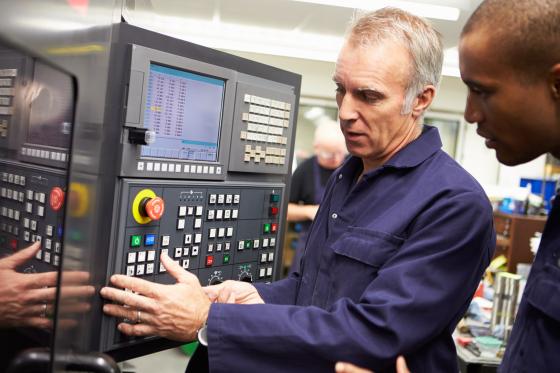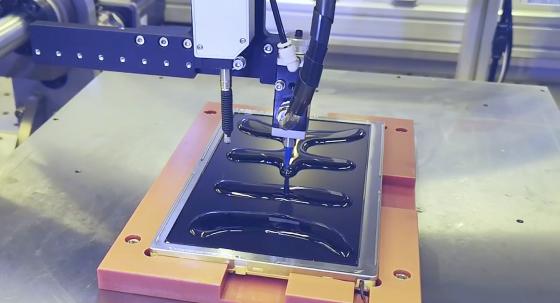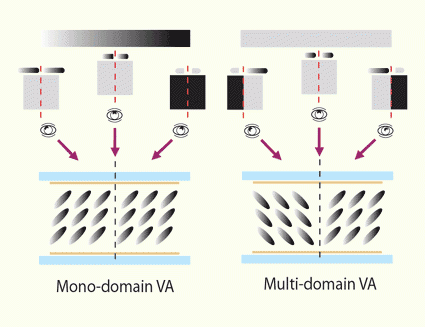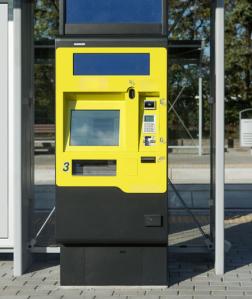In this blog, we explore the choices for designers seeking a display with a particularly wide viewing angle and consider the effects of each option on other aspects of the system.
Why Should I Worry About Viewing Angle?
Your user interface may need to be seen from a wide variety of angles for various reasons. Multiple users may need to read the display or interact with your application at the same time. On the other hand, equipment like industrial machinery or home appliances can be safer and easier to use if menu items and instructions can be read from any angle. You can influence the viewing angle of your application in several ways, including through the choice of display technology and by applying a process such as optical bonding.

Each approach has advantages and disadvantages and imposes various trade-offs, so it’s important to understand the options and how they may impact other aspects of the system.
Can Optical Bonding Extend the Viewing Angle of My Display?
Optical bonding creates a permanent bond between the front surface of the liquid crystal display and the rear side of touchscreen, using a specially formulated Optically Clear Adhesive (OCA). The OCA works by matching the indices of refraction between touchscreen and LCD and completely fills the air gap that would usually exist between these two components.

The absence of an air gap means the amount of ambient light that would normally be reflected back at the user after entering the system and encountering the air gap and the surface of the display, will be significantly reduced. With this improvement, displayed colours appear brighter, more vivid and can be seen more clearly from acute angles. The resulting increase in brightness also means the backlight luminance can be dimmed to reduce the application’s power consumption.
Although including optical bonding into the display module structure will increase cost because additional materials and manufacturing processes are required for manufacturing the display, there are other benefits to consider too.
- The absence of condensation forming in the gap between the display and touchscreen which can have a negative impact on optical performance as external temperatures fluctuate between warm and cold.
- Increased impact resistance of the assembly, so if your application needs a high IK rating as well as wide viewing angles, including optical bonding to the structure can go some way to providing an effective solution. Read our blog here to find out more.
Will an IPS Display Give a Wider Viewing Angle?
With In-Plane Switching (IPS) technology, also known as Super-TFT, the crystal structure and electrode placement are arranged to ensure that the molecules are always aligned parallel to the plane of the display. The backlight passes through when the cell is active and is shuttered when no voltage is applied.
IPS was developed specifically to ensure superior colour reproduction and stability, compared to conventional displays, while extending the viewing angle. Super-IPS displays emerged later, offering faster response time. IPS is often the best choice when high colour quality and minimal off-centre contrast shift are needed, at the same time as a wide viewing angle.
What about MVA Displays?
An MVA (Multidomain Vertical Alignment) display is designed so that the liquid crystal molecules are aligned perpendicular to the glass in several domains. This is achieved by texturing the inner glass surfaces in such a way as to allow the LCD molecules to remain in a perpendicular state until specific pixels in the region are selected. Selected pixels cause the LC molecules to reorient parallel to the glass in each of their domains which reduces the effect of birefringence, as seen in TN displays, perceived by the user when viewed from various angles.

As a result, the brightness and colour of individual pixels appear more uniform over a wider viewing angle. Even so, MVA falls between IPS and TN displays in terms of display quality and some consideration should be given to the type of information that your final application is intended to display. For example, MVA displays have slower response times therefore, if you want to present fast-moving animations this may not be the right solution. MVA displays can also exhibit colour shift at extreme viewing angles, which causes darker colours to appear slightly washed-out. Depending on your application, this could be an acceptable trade-off in exchange for wider viewing angles. It may be possible to mitigate the effects of colour shift by using lighter colours when designing your GUI.
There are several variations of MVA technology, such as Super-MVA (S-MVA), which offer superior performance in terms of contrast, response time, and viewing angles.
Can I Increase the Viewing Angle and Still Meet Performance and Cost Targets?
In summary, each of these approaches to improving the viewing angle may be suitable for your application, depending on aspects such as cost, power consumption, the type of content you need to display, and the operating environment.
It can take an experienced engineer to balance the various trade-offs and achieve the best overall solution. This is our speciality, at Anders, so do come and talk to us if you’re concerned about viewing angle in any current or future project.


